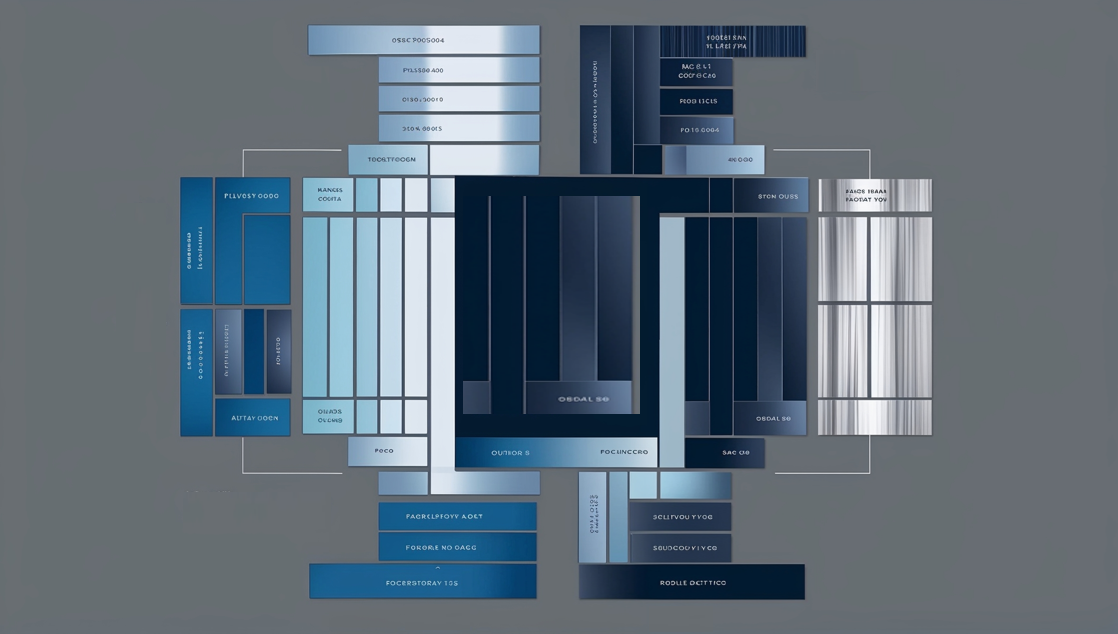Organizations face increasing complexity in managing their information systems in today's rapidly evolving technological landscape. Zachman is a comprehensive framework for designing and managing information systems architecture, addressing key challenges, and offering actionable solutions.
As businesses grow, their IT systems expand, leading to a complex network of components that must interact seamlessly. The need for a cohesive architecture has grown more pressing as companies increasingly rely on technology to manage operations, support decision-making, and drive competitive advantage.
Many organizations struggle to navigate the multifaceted nature of IT systems. Conflicting viewpoints, such as those of owners, designers, and builders, further complicate matters. Moreover, different aspects of information systems, including data models, process flows, and network configurations, require a comprehensive approach to avoid misalignment and inefficiencies.
The lack of a structured approach can lead to chaos, hindering communication and integration. Disparate system components may fail to align with business goals, while technological constraints and decentralized management can exacerbate issues, resulting in disorganization and missed opportunities.
This analysis offers Zachman a structured framework to address these challenges, including:
- Navigating Perspectives: Recognizing the viewpoints of owners, designers, and builders to ensure alignment across the system lifecycle.
- Comprehensive System Representations: Providing various types of descriptions, such as data models, process flows, and network configurations, to cover all aspects of the information system.
- Integrated Approach: Outlining strategies to manage different architectural representations, mitigating the risk of chaos and ensuring cohesive IT systems.
By following the Zachman framework, CIOs and IT leaders can design and manage information systems that align with business goals, navigate diverse perspectives, and ensure comprehensive system representations. This structured approach enables organizations to avoid chaos, integrate IT resources effectively, and create information systems supporting sustainable success.
Main Contents
- Zachman Framework for Information Systems Architecture: A structured approach for managing the interfaces and integration of all system components, providing a cohesive blueprint for IT initiatives.
- Navigating Perspectives: Acknowledging the differing viewpoints of owners, designers, and builders, Zachman ensures alignment across the system lifecycle.
- Comprehensive System Representations: Zachman introduces various types of descriptions, including data models, process flows, and network configurations, to capture all aspects of the information system.
- Mitigating Chaos: Highlighting the importance of structure in preventing decentralized chaos, Zachman allows for transparent management and control over IT resources.
- Linking IT to Business Goals: Illustrating how information systems architecture can support business and IT strategies ensures that technology initiatives drive overall organizational success.
Key Takeaways
- Structured Approach: Zachman is a cohesive framework for managing information systems architecture is crucial for integrating system components and preventing chaos.
- Alignment of Perspectives: Recognizing and navigating differing viewpoints helps ensure alignment between business goals, system design, and implementation.
- Comprehensive Representations: Different descriptions, such as data models, process flows, and network configurations, provide a full picture of the information system.
- Managing Complexity: Structuring IT initiatives helps organizations manage complexity, integrate IT resources effectively, and avoid decentralized chaos.
- Supporting Business Goals: Information systems architecture can bridge the gap between IT and business strategies, ensuring that technology initiatives contribute directly to organizational success.
The Zachman framework for information systems architecture is a valuable resource for CIOs and IT leaders tackling the complexities of aligning IT systems with business goals. It provides a comprehensive structure for managing diverse aspects of IT infrastructure, allowing leaders to overcome real-world challenges effectively. By following Zachman, CIOs and IT leaders can:
- Structure IT Systems for Success: Zachman introduces a cohesive approach for defining and integrating all system components, from data models to process flows and network configurations. This helps CIOs create a comprehensive IT architecture that minimizes complexity and maximizes alignment with business goals.
- Navigate Diverse Perspectives: Zachman acknowledges the differing viewpoints of owners, designers, and builders, providing a roadmap to ensure alignment across the system lifecycle. CIOs can use this roadmap to bridge gaps between business goals, system design, and implementation, ensuring that IT initiatives support overall organizational success.
- Prevent Decentralized Chaos: Zachman emphasizes the importance of structure in preventing decentralized chaos. This model allows CIOs to manage IT resources effectively, avoid disorganization, and ensure cohesive integration across all system components.
- Comprehensive System Representations: Zachman introduces various descriptions, including data models, process flows, and network configurations. This comprehensive approach helps CIOs capture all aspects of their information systems, allowing for more informed decision-making and strategy development.
- Link IT to Business Strategy: Zachman illustrates how information systems architecture relates to business and IT strategies. By following its guidance, CIOs can ensure that IT initiatives contribute directly to organizational goals, driving value and ensuring long-term success.
The Zachman framework provides CIOs and IT leaders with a structured approach to managing information systems architecture, bridging the gap between IT and business strategies. By applying its insights, CIOs can structure IT systems for success, navigate diverse perspectives, prevent decentralized chaos, and ensure comprehensive system representations, ultimately driving sustainable success for their organizations.

